We use information collected through cookies and similar technologies to improve your experience on our site, analyze how you use it and for marketing purposes.
Your privacy settings
We and our partners use information collected through cookies and similar technologies to improve your experience on our site, analyze how you use it and for marketing purposes. Because we respect your right to privacy, you can choose not to allow some types of cookies. However, blocking some types of cookies may impact your experience of the site and the services we are able to offer. In some cases, data obtained from cookies is shared with third parties for analytics or marketing reasons. You can exercise your right to opt-out of that sharing at any time by disabling cookies.
Manage Consent Preferences
Necessary
Always ON
These cookies and scripts are necessary for the website to function and cannot be switched off. They are usually only set in response to actions made by you which amount to a request for services, such as setting your privacy preferences, logging in or filling in forms. You can set your browser to block oralert you about these cookies, but some parts of the site will not then work. These cookies do not store any personally identifiable information.
Analytics
These cookies and scripts allow us to count visits and traffic sources, so we can measure and improve the performance of our site. They help us know which pages are the most and least popular and see how visitors move around the site. All information these cookies collect is aggregated and therefore anonymous. If you do not allow these cookies and scripts, we will not know when you have visited our site.
Embedded Videos
These cookies and scripts may be set through our site by external video hosting services likeYouTube or Vimeo. They may be used to deliver video content on our website. It's possible for the video provider to build a profile of your interests and show you relevant adverts on this or other websites. They do not directly store personal information, but are based on uniquely identifying your browser and internet device. If you do not allow these cookies or scripts it is possible that embedded video will not function as expected.
Google Fonts
Google Fonts is a font embedding service library. Google Fonts are stored on Google's CDN. The Google Fonts API is designed to limit the collection, storage, and use of end-user data to only what is needed to serve fonts efficiently. Use of Google Fonts API is unauthenticated. No cookies are sent by website visitors to the Google Fonts API. Requests to the Google Fonts API are made to resource-specific domains, such as fonts.googleapis.com or fonts.gstatic.com. This means your font requests are separate from and don't contain any credentials you send to google.com while using other Google services that are authenticated, such as Gmail.
Marketing
These cookies and scripts may be set through our site by our advertising partners. They may be used by those companies to build a profile of your interests and show you relevant adverts on other sites. They do not store directly personal information, but are based on uniquely identifying your browser and internet device. If you do not allow these cookies and scripts, you will experience less targeted advertising.
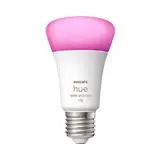
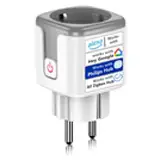
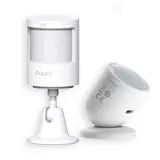
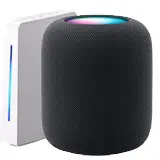
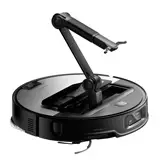

Is an autonomous 100% home with renewable energy possible?
Can you imagine living in a home that is completely self-sufficient with clean energy? An autonomous 100% home with renewable energy. Sounds futuristic, right? But, it's more achievable than you think! Forget about electricity bills and embrace a sustainable lifestyle. In this article, we'll explore whether it's really possible to achieve this energy autonomy, what it entails and how you can get closer to this goal.
What does a 100% stand-alone renewable energy home mean?
An energy autonomous home is one that produces all the energy it needs to function. It does not depend on the conventional electrical grid or fossil fuels. The key lies in renewable energies: sun, wind, water, etc. It is a closed system where energy is generated, stored and consumed within the home itself. This reduces the carbon footprint and reduces dependence on non-renewable energy sources.
Key components of a self-contained home:
The challenges of total energy autonomy
While the idea of an autonomous 100% home is appealing, there are challenges to consider. It is not as simple as installing solar panels and disconnecting from the grid. Viability depends on climatic factors, geographic location and consumption habits.
Factors that hinder energy autonomy:
Is it really possible to achieve total autonomy? Success stories and limitations
The short answer is: yes, it is possible. But the long answer is: it depends. Achieving 100% energy autonomy requires planning, investment and a change in consumption habits. There are many examples of homes that have achieved energy autonomy, but there are also cases where it is more difficult or costly.
Examples of self-employed households:
Limitations:
Renewable energies for an autonomous home: which one to choose?
The choice of renewable energy source depends on local conditions and your needs. Ideally, several sources should be combined to ensure a constant supply of energy.
Photovoltaic solar panels:
They convert sunlight directly into electricity. They are the most popular and versatile option. They can be installed on roofs, facades or on the ground. Their efficiency has improved considerably in recent years. They are ideal for sunny climates.
Wind turbines:
They convert wind energy into electricity. They are more efficient in areas with strong and constant winds. They require considerable space and can generate noise.
Micro hydrogeneration systems:
They convert water energy into electricity. Require a constant source of water, such as a river or stream. They are a viable option in areas with abundant water.
Geothermal heat pumps:
They take advantage of the thermal energy of the subsoil to heat and cool the house. They are very efficient and reduce energy consumption for heating and cooling.
Energy storage: the key to autonomy
Renewable energy is intermittent, so energy storage is crucial. Batteries are the most common solution to store the energy generated and use it when there is no sun or wind. Battery capacity must be sufficient to cover energy needs during periods of low production.
Types of batteries:
Other energy storage methods:
Energy efficiency: reducing demand
Energy efficiency is fundamental to achieving autonomy. The less energy you need, the less you have to generate and store. Investing in energy efficiency reduces upfront costs and facilitates autonomy.
Measures to improve energy efficiency:
Costs and financing of a self-employed household
The initial investment in a stand-alone home can be significant, but it can pay off in the long run. Savings on electricity bills offset the initial investment.
Costs:
Financing:
Regulations and permits: what do you need to know?
Before installing a renewable energy system, it is important to find out about local regulations and permits. Some regulations may make it difficult to connect or disconnect from the mains.
Aspects to consider:
Recommendations and best practices for an autonomous home
To achieve an autonomous 100% home with renewable energy, it is important to follow these recommendations:
Conclusion: The Future of Home Energy
An autonomous 100% home with renewable energy is an ambitious but achievable goal. It requires planning, investment and a commitment to energy efficiency. As technology advances and costs decrease, energy autonomy becomes increasingly affordable. If you are thinking about making the leap to renewable energy, do your research, plan and consult with experts. Share this article with your friends and family to spread the idea of energy autonomy. Are you ready to build a more sustainable future? Change starts at home!
Related Posts
How do smart solar panels work?
Can you imagine solar panels that not only capture sunlight, but also think and adapt to maximize their efficiency? Welcome to the world of smart solar panels! Forget conventional solar installations. We are talking about a more efficient, sustainable and, above all, smart energy future. In this article, we will explore how to ...
Wireless homes: What devices run on batteries?
Imagine a home with no tangled wires, no plugs in sight. A minimalist, modern home where power flows wirelessly. Sounds like science fiction, doesn't it? Well, the reality is approaching by leaps and bounds. More and more devices are becoming battery-powered, freeing us from the tyranny of wires and transforming the way we ...
TOP 5 gadgets to reduce water consumption
Are you concerned about the impact your water consumption has on the planet? You're not alone. Reducing your water consumption is not only good for the environment, but it can also help you save money on your bills. The good news is that there are innovative gadgets that make saving water more ...
How to save electricity with smart plugs
Are you worried about your electricity bill going up? Want to reduce your carbon footprint without making things complicated? Smart plugs could be the solution you've been looking for. They're not magic, but they're close. They let you control the energy consumption of your electrical devices, saving you money and contributing to a more sustainable planet.